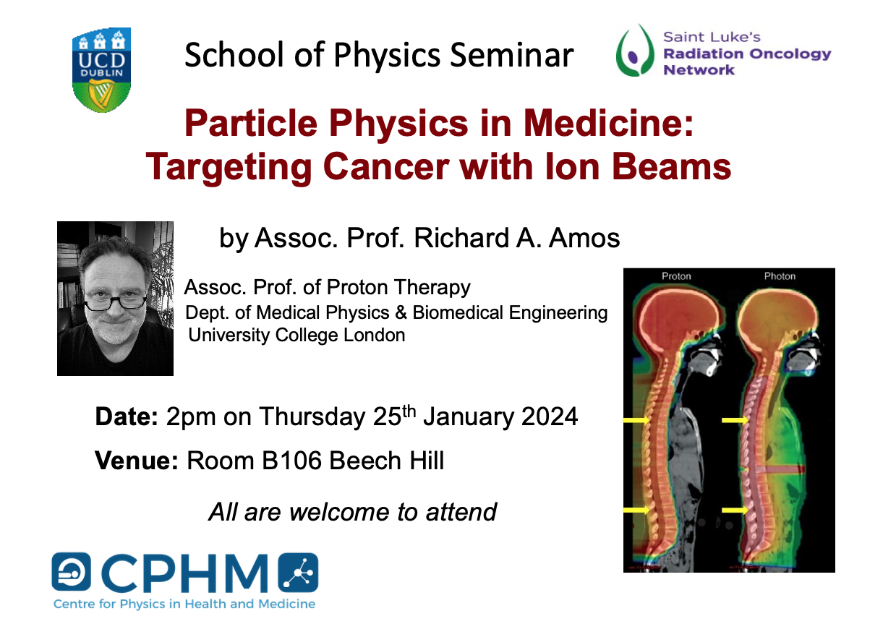Friday, 19 January, 2024

Seminar Abstract
Radiotherapy, one of the three main pillars of trimodal cancer care, is well demonstrated to improve overall survival, spare healthy organs, and improve quality of life. The last two decades has seen a worldwide proliferation of proton and heavier-ion beam radiotherapy facilities purported to improve the therapeutic ratio for oncology patients. The physical dose deposition characteristics of ion beams, compared to those of more conventional x-ray radiotherapy beams, can increase dose sparing to healthy tissue and reduce the risk of radiation-related toxicities. However, we are yet to fully exploit these physical characteristics for radiotherapy. Precise control of particle range with patients’ anatomy and accurate quantification of variable biological effectiveness along particle tracks remain challenging. A lack of adequate data to reduce uncertainty in calculated particle ranges in vivo and to accurately model linear-energy transfer (LET) and its correlation to relative biological effectiveness (RBE) hinders progress with solving these issues.
Despite these challenges, technological advances are presenting new opportunities for ion-beam radiotherapy. The application of ions to the delivery of ultra-high dose rate (UHDR) radiotherapy is receiving significant attention globally; the first in-human UHDR proton therapy clinical trial has recently been completed in the United States. The delivery of spatially-fractionated radiotherapy with ion-minibeams is also being investigated and hitherto shows promise as a clinically efficacious technique. Understanding the underlying mechanisms for the pre-clinical observations made with these techniques present interesting challenges before widespread translation into clinical practice.
Another modality of ion-based radiotherapy, boron neutron capture therapy (BNCT), is experiencing a renaissance due the development of accelerator-based BNCT systems for use in clinical facilities. BNCT relies in the accurate targeting of cancerous cells with boron-loaded agents. External beam neutrons are delivered to the target and interact with boron taken up in the cancer cells resulting in the delivery of a highly localized dose from short range, high-LET ions such as 7Li and 4He. The challenges presented by the clinical adoption of BNCT include the development of efficient drug delivery agents and accurate verification of radiation dose.
This presentation will outline legacy, contemporary, and emerging technologies in the field of ion-beam radiotherapy.